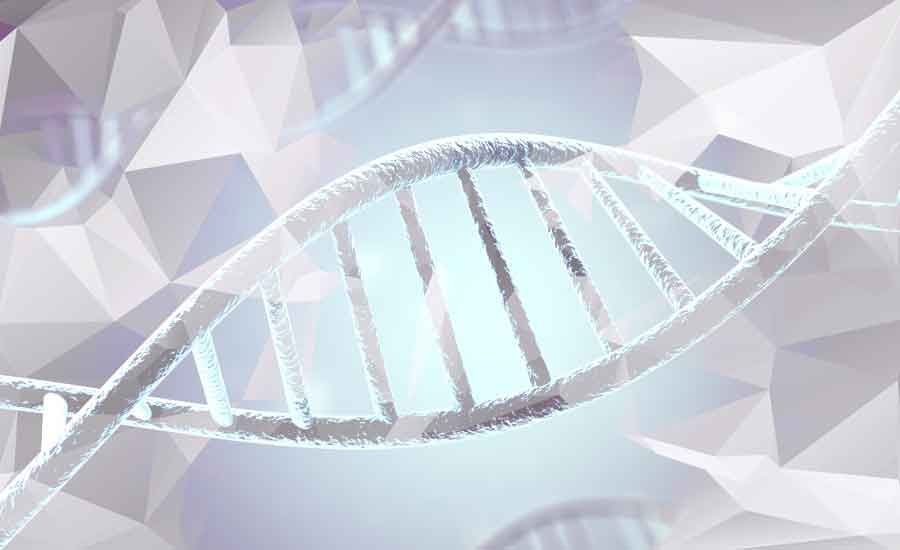DNA origami: Unfolding risk?
By Filippa Lentzos, Cédric Invernizzi | January 25, 2018
 DNA origami
DNA origami
The US military has begun to test swarming drones—”distributed collaborative systems made up of many small, cheap, unmanned aircraft.” Several other militaries are doing likewise. Flocks of these “micro-drones,” perhaps capable of “collective decision-making without human help,” present legal and ethical questions with which the world is just beginning to grapple.
In a seemingly unrelated area of technology, researchers are designing and building machines out of DNA—at a scale one thousand times smaller than a human hair. This area of biotechnology research, known as DNA origami, folds DNA into nano-scale shapes designed to perform specific mechanical functions or biological interactions. It is still at an early stage but already shows promise in drug delivery, antibody production, and electronics. But could nanorobots be programmed to release damaging payloads inside human bodies? Could the building blocks of life be converted into destructive, double-helix swarms that wreak havoc at the cellular level?
The art of folding DNA. DNA represents a unique building material because it can store information; it is well-defined and flexible; and, most importantly, it can fold itself.
The four bases that make up DNA—adenine, cytosine, guanine, and thymine—always pair up in the same way. When you align two strands of DNA with complementary base sequences (adenine and thymine; cytosine and guanine), they automatically bind to one another and, all by themselves, assemble into a double helix. DNA’s strict base-pairing rule and its self-assembly principle are what make it possible to design and create DNA origami structures.
When you fold a single strand of DNA, you must fix the folded lengths in place with another tiny piece of DNA. This piece is called a “staple strand.” You keep folding the single strand of DNA again and again until it has formed a shape. The folded lengths are bound together as ladders are bound together by their rungs—and just as with ladders and rungs, the structure becomes more rigid and stable as more staple strands are added.
A single string of DNA can fold into all kinds of intricate shapes—depending on the base sequence encoded in the staple strands. Since the discovery of the DNA double helix 65 years ago, researchers have developed a detailed understanding of this molecular-scale building material and its properties. Thus researchers can predict, with reasonably good success, the shapes into which a DNA molecule of a given sequence will fold.
The first creations engineered with DNA were all flat shapes. At New York University, a laboratory run by crystallographer Ned Seeman developed two-dimensional, rectangular DNA shapes, or “tiles,” in the 1990s. These tiles could bind together and self-assemble into larger, two-dimensional sheets. Other tiles formed tubes, or even simple machines such as tweezers. But designing such structures took many months, or even years. And because researchers were focused on designing structures from scratch, it was necessary to create purified DNA strands. This significantly constrained both the size and complexity of the designs that researchers could create.
To get around this problem, Paul Rothemund—a computational bioengineer at Caltech—adopted a different approach. Rather than designing a single-strand DNA from scratch, he turned to naturally occurring, ready-made pieces of DNA: viruses. Rothemund designed DNA staples that would bind to specific points along the “scaffold” strand of a virus. This caused the viral DNA strand to automatically fold into a predetermined, two-dimensional shape. Rothemund created a number of arbitrary shapes, including squares, discs, five-pointed stars, and even miniature smiley faces. The arrival of DNA origami was announced to the world in 2006 when Rothemund’s smiley face graced the cover of Nature. The ease with which DNA could suddenly be manipulated in this fashion was a breakthrough. Many of the intricacies involved in precise DNA engineering, and in development of other metamaterials, could now be set aside.
In 2012, another version of DNA origami was introduced. This approach depends on “bricks” rather than scaffolds—that is, small lengths of DNA are assembled into units reminiscent of Legos, which can in turn be joined together. The scaffold and brick approaches are both very popular among nanotechnologists, and ever more complex three-dimensional shapes are now being created: doughnuts, bunnies, teddy bears, the famous LOVE sculpture by Robert Indiana, and even an image of the Mona Lisa.
Scientists have also begun fashioning tiny machine components by coating DNA objects with plastics and other materials. Combine such machinery with photonic sensors, electric circuits, and complex motion and dynamics, and you are well on your way to a nanorobot made from DNA—a nanorobot that not only mimics mechanical functions but also interacts with biological materials. Continued breakthroughs are enabling DNA origami structures to be built bigger, cheaper, and faster.
These advances are starting to unlock the potential for practical applications of DNA origami. In 2008, for instance, scientists used DNA origami to make a “box” with important potential applications in medicine. One strand of DNA holds the box’s “lid” shut; a separate DNA “key” springs it open. The key is a molecule that acts as a sensor; potentially, it could detect cancer cells to ensure that drugs are released at the right location in the body. DNA nanorobots that could deliver personalized medicine to target sites in the human body would represent a real medical advance. But the invention leaves many in the security community wondering what else could be put in the box and subsequently released by external triggers.
Molecular payloads. The US military has already shown interest in DNA origami. For example, the Pentagon would like to use the technology to create artificial antibodies that could be integrated into portable devices and used in war zones to detect the hostile use of biological agents such as those that cause smallpox or Ebola virus disease. Rothemund, the Caltech bioengineer, envisions additional applications for artificial antibodies, such as exposing the human immune system to DNA origami scaffolds that hold pieces of a virus. Such a procedure would “teach” the body to recognize a virus and develop antibodies to it—before a live virus got the chance to attack.
The Pentagon has also expressed interest in using DNA origami to create “programmable matter,” or materials that can change shape, size, and possibly even state—from solid to liquid, say, or vice versa. The Defense Department, in a 2015 technical assessment report on synthetic biology, mentioned Rothemund’s work and noted that “the folding properties of DNA [were leveraged] to create precise carbon-nanotube junctions which demonstrated field-effect transistor-like behavior at the nano scale… [demonstrating] the ability of biological systems to produce specialty materials which are difficult, expensive, or impossible to generate through traditional means.” Some of Rothemund’s work on semiconductors and biomolecular circuitry—work in which he uses DNA origami structures both as a wire and as a signal source—has been funded by the Living Foundries program of the Defense Advanced Research Projects Agency (DARPA). New applications for DNA origami will continue to be found—and military interest in the field is likely to increase. As Arati Prabhakar, then the director of DARPA, noted in 2014: “Biology is nature’s ultimate innovator, and any agency that hangs its hat on innovation would be foolish not to look to this master of networked complexity for inspiration and solutions.”
But is there a dark side to DNA origami? To take an example, could the technology be misused to introduce stealth nanorobots into human bodies and to deliver damaging molecular payloads at specific sites?
The technology already exists. Six years ago, scientists developed “an autonomous DNA nanorobot capable of transporting molecular payloads to cells, sensing cell surface inputs for conditional, triggered activation, and reconfiguring its structure for payload delivery.” Building on the 2008 box concept, the scientists created a hexagonal box with hinges, two locks, and docking sites inside for molecular payloads. To assemble the robot, the scientists mixed DNA, heated the DNA to 80 degrees Celsius, and then slowly cooled it to room temperature. Through such a process the DNA strands—the “scaffold” and “staples”—find their complementary sequence and then anneal, and the robot folds into its most stable shape. The hexagonal nanorobot can be loaded with a variety of materials and can respond to a wide array of cues. Its creators note that “the robots can induce a variety of tunable changes in cell behavior.”
The tricky part is introducing intact DNA origami structures into human bodies—but concepts relevant to achieving this task have already been tested. For instance, coating nanoparticles with peptides that signal “self” to an organism’s immune system enables the particles to persist longer without being recognized as “foreign” by the immune system; the organism’s defenses therefore do not react to the nanoparticles as they would normally act against “foreign material.” This “invisibility cloaking” would likely work for DNA origami structures as well—that is, the surface of a DNA origami structure could likely present itself to the immune system of a recipient organism as “self.” Likewise, recent advances toward in vivo production of self-cleaving, single-stranded DNA may represent an elegant step toward delivery of DNA origami. The same is likely true for advances in RNA origami. RNA is particularly versatile—it can fold itself into a variety of complex structures that enable the RNA molecule to perform in a multitude of ways. It can code, decode, regulate, and express genes in cells. It can even act as a gene-less pathogen—or a “viroid”—replicating autonomously but not coding for any proteins.
Clearly, DNA origami does carry security implications, particularly related to nanomachines and delivery systems—and to DNA origami structures that can act as nanomachines and delivery systems simultaneously.
Governing misuse. Misuse of DNA origami is already prohibited explicitly by the Biological and Toxin Weapons Convention (BTWC). Parties to the treaty agree that the BTWC “unequivocally covers all microbial or other biological agents or toxins, naturally or artificially created or altered, as well as their components, whatever their origin or method of production” (emphasis added).
But would this proscription hold if origami were constructed entirely with synthetic base-structures—creations inspired by DNA or RNA, but not qualifying as DNA, RNA, or any other known, naturally occurring nucleic acid? And what if these synthetic base-structures did not deliver payloads, but instead had direct detrimental effects on an organism, either because they interfered with biological processes or performed purely mechanical functions?
The legal status of novel biological agents—or of developments in science and technology in general—is an important issue. What matters even more, however, is whether militaries find new agents and developments attractive and perceive them as useful. If they do, the balance of incentives and disincentives that determine compliance with BTWC obligations could be affected. Will DNA origami alter nations’ sociopolitical calculations regarding the utility of DNA-inspired weapons, and will new calculations drive further development of such weapons? Those are open questions.
Together, we make the world safer.
The Bulletin elevates expert voices above the noise. But as an independent nonprofit organization, our operations depend on the support of readers like you. Help us continue to deliver quality journalism that holds leaders accountable. Your support of our work at any level is important. In return, we promise our coverage will be understandable, influential, vigilant, solution-oriented, and fair-minded. Together we can make a difference.
Topics: Analysis















